SO OCD Case Study
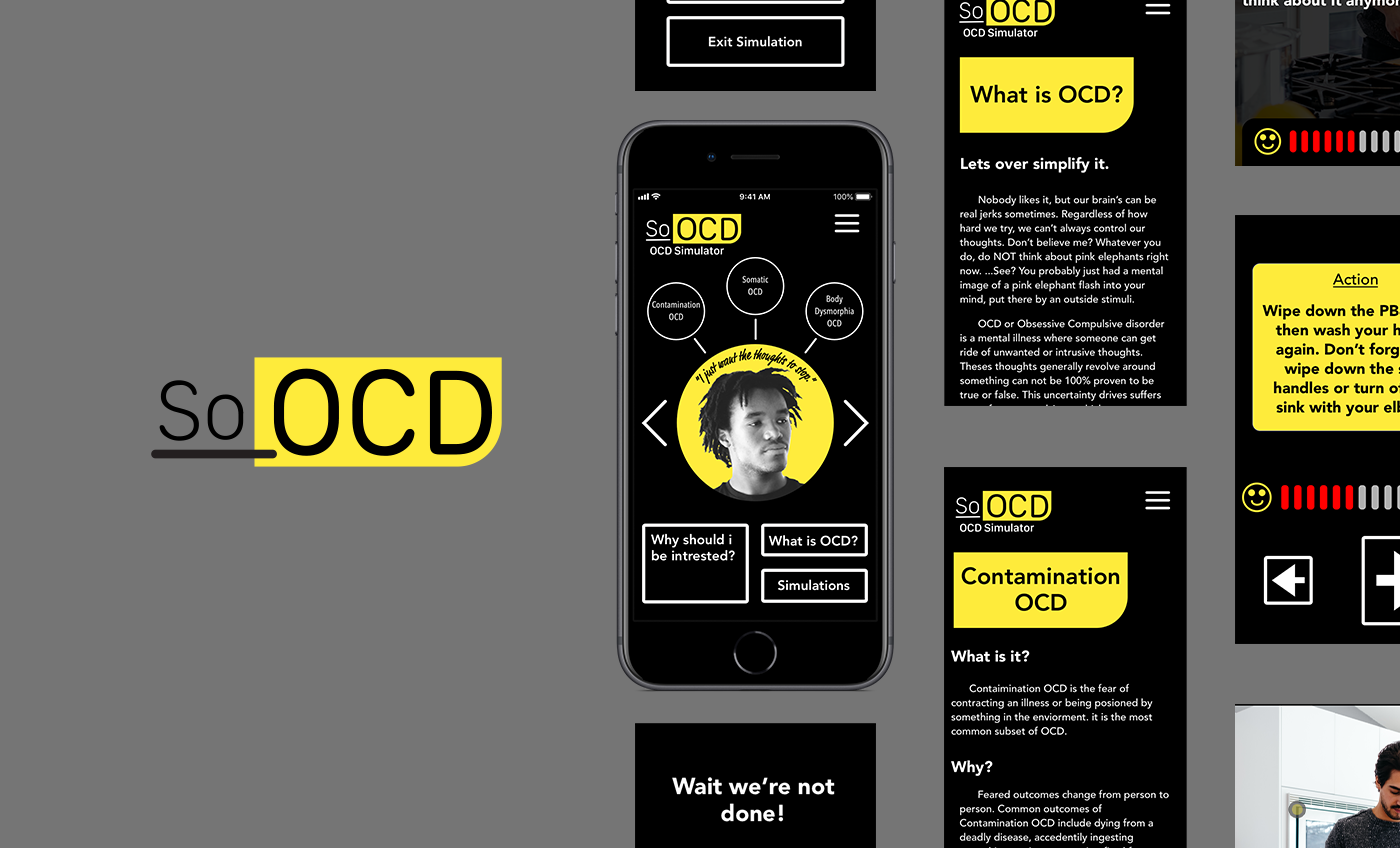
Introduction
“Sorry, I’m kind of OCD about that.” Statements like this have found their way into our everyday language and seem harmless enough, but are they? I realize that by simply asking, many of you instantly realize that OCD is a serious mental illness and isn’t something to be thrown around lightly. If only inspiring lasting social change was as easy as asking a question; So OCD is my attempt to inspire that change. This project was my first journey into good UX practices at MICA’s UX program and what an adventure it was! We had every part of the process ingrained into our brains and the knowledge of how to apply them to what ever problem we are solving. This project opened my eyes to the need for UX design.
The Problem
People should stop saying things like “I’m OCD about…” if they don’t suffer from OCD.
We all say things without thinking, yet it is our intentions that are important. I’m sure 99.9% of us use the term “OCD” without cruel intentions, but unintentionally we are marginalizing the suffering of people who are crippled by this disorder. Changing people’s casual use of “OCD” can help sufferers realize that what they are thinking is not normal and help non-sufferer’s realize the magnitude of the disorder.
The Solution
Use technology to let help others understand through empathy.
So OCD is an app that simulates what it’s like to have OCD. Through the use of augmented reality and instructed activities, the app can give the user a glimpse into the mind of someone with OCD. In doing this, we are giving users a more natural way of defining the disorder, encouraging sympathy for sufferers, and inspiring a change in social behavior.
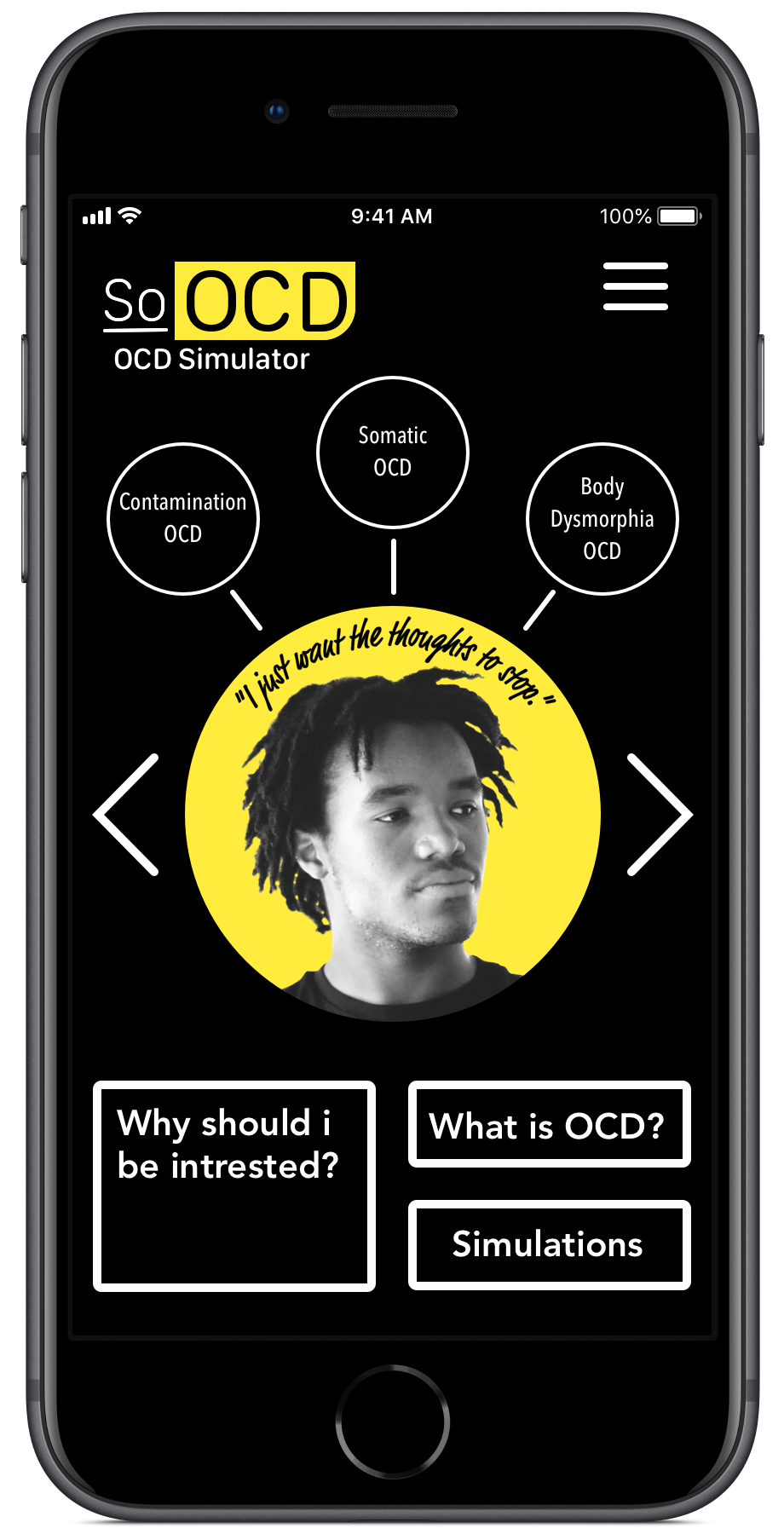
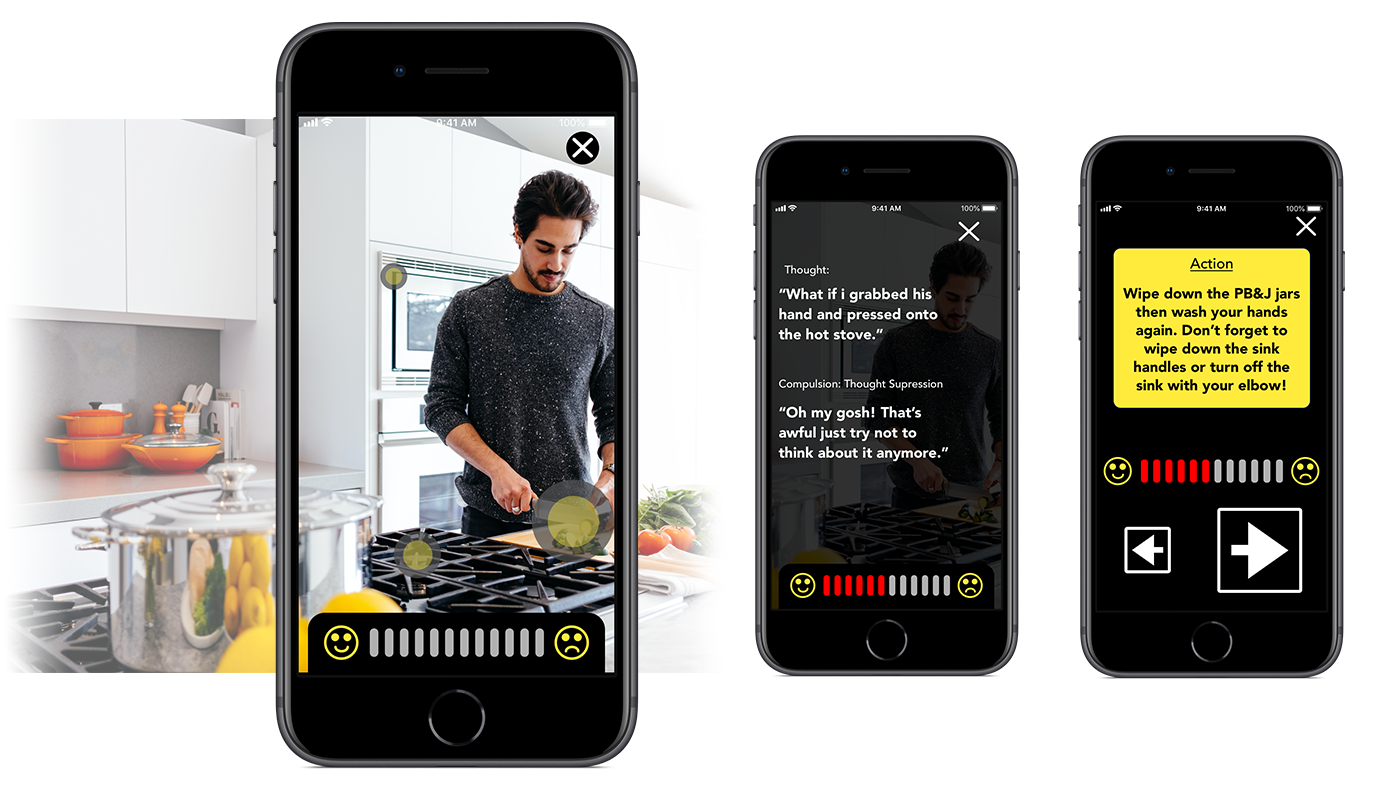
Roles
This project was completely created by me.
As the solo designer on this project, I orchestrated everything that went into the final project. Some of these jobs are as follows: researcher, copyrighter, UI designer, and more! Guiding critiques and suggestions were offered to me by my professor and peers.
The User
So OCD was created for the people who are close to people who suffer from OCD or people who just want to change their behavior.
Though there is a wide range of possible users, the ones I kept in the forefront of my mind when designing, were the friends and family of people living with OCD. It is easy for a person to want to help someone who is obviously in pain, yet who looks after the caretakers? This I felt was my job: to design something that would seamlessly help those who were trying to help others.
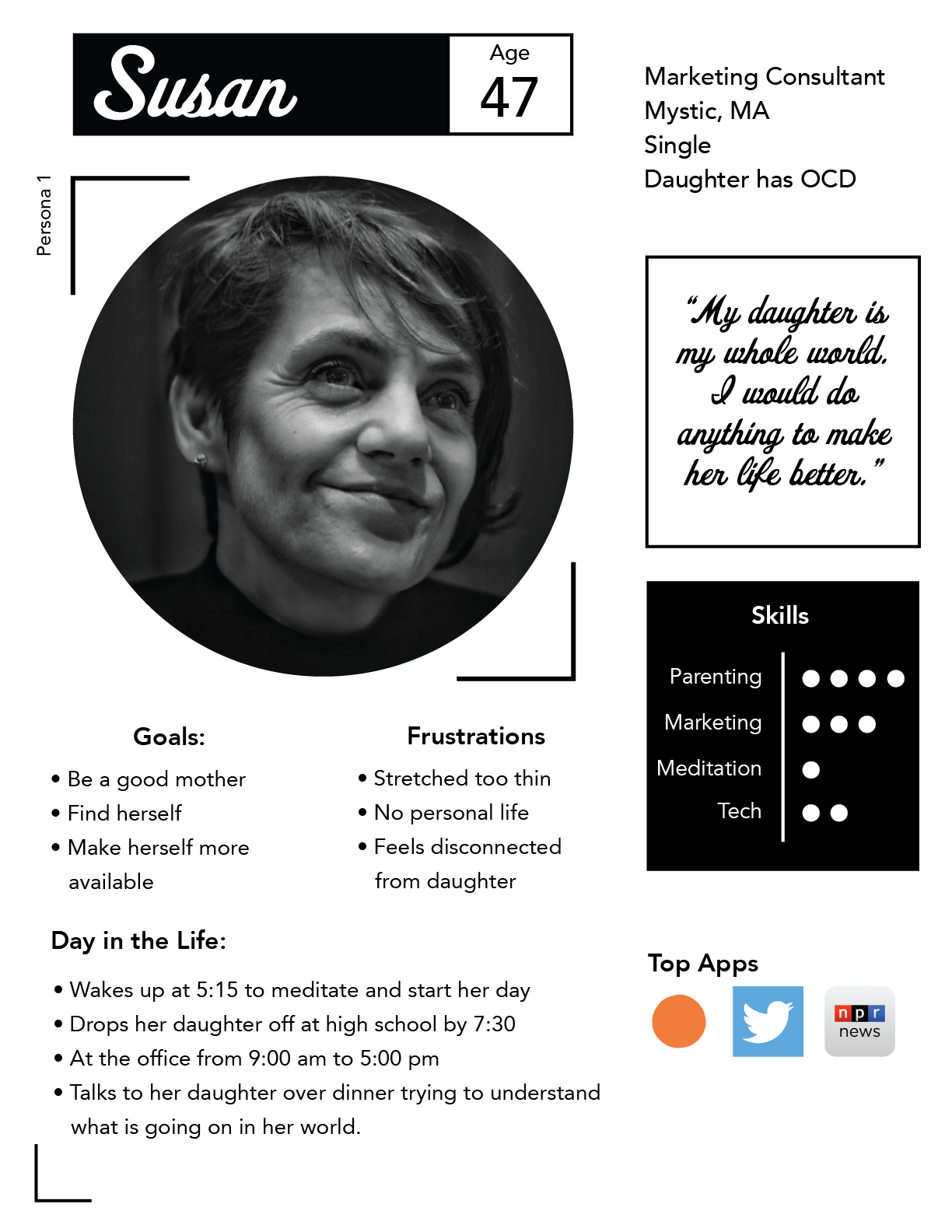
Susan is a prime example of the type of user who has the most important needs that I was trying to meet. Creating this persona not only made me connect with the amount of effort it takes to be a working single mother, but also appreciate the perspective of a parent who is watching the most important person in their life suffer from something they do not truly understand.
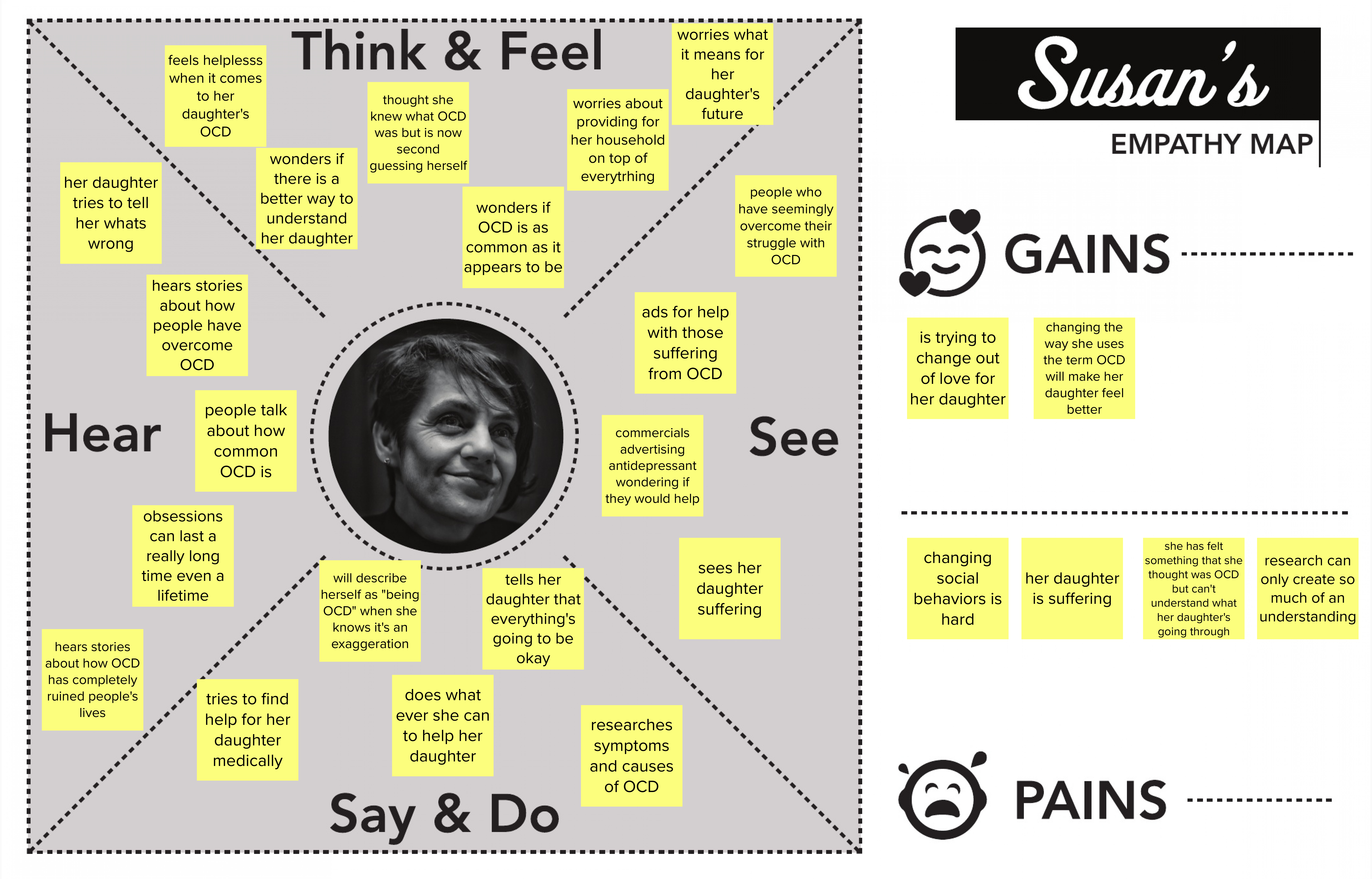
Scope and Constraints
The most important thing is to get something done, sometimes that means tightening the scope of the project.
During early phases of development, the scope of this project was much more broad than the end result. I had originally set out to change the way people incorrectly use all mental health terminology. Though I tightened my focus on the work to strictly OCD, the reasoning for putting in the effort remained unchanged. In doing the research, I realized just how many mental illness terms people misuse in conversation, which would’ve been simply too big for one student to take on in 8 weeks. So, I chose the most common factor I found amongst the small research group I had.
The Process
The process all started with defining the problem: many people misuse mental health terminology. Now that I knew what I was trying to fix, the next part was to define who this problem applied to: future users. Through the use of personas to envision users, I started to lay down broad strokes of who these people were and what their daily lives were like. The next step came in the form of research, finding people who misuse mental illness terms, trying to figure out why they used them, and just as importantly, why they didn’t use others. I found that people stopped using these terms when they had high levels of empathy for sufferers of those illnesses.
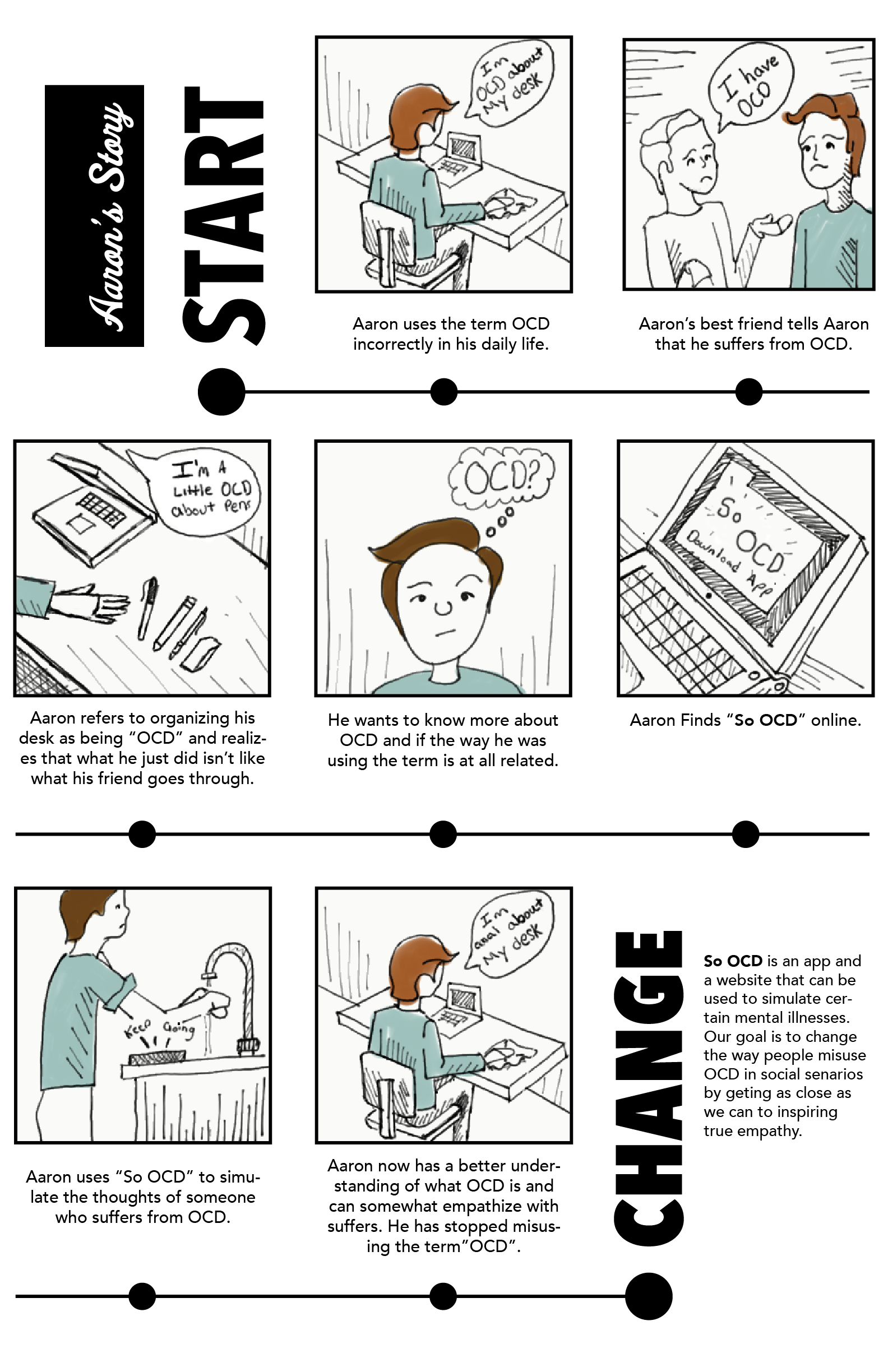
From there my solution was simple, how do we make it easier to create some level of empathy for people suffering from mental illness so that we can inspire change and understanding? My answer: use technology to give them a way to get into someone’s head who suffers from OCD. I also needed to consider what users would be going through, physically and emotionally, while interacting with the product. I created empathy maps, user journeys, and storyboards to illustrate my constraints, keeping usability at the forefront. I delved into my new solution headfirst, creating a site map and wireframes that would give the user all the information they needed to understand the simulations. After some UI work, I finally had a fully developed prototype to take to product testing.
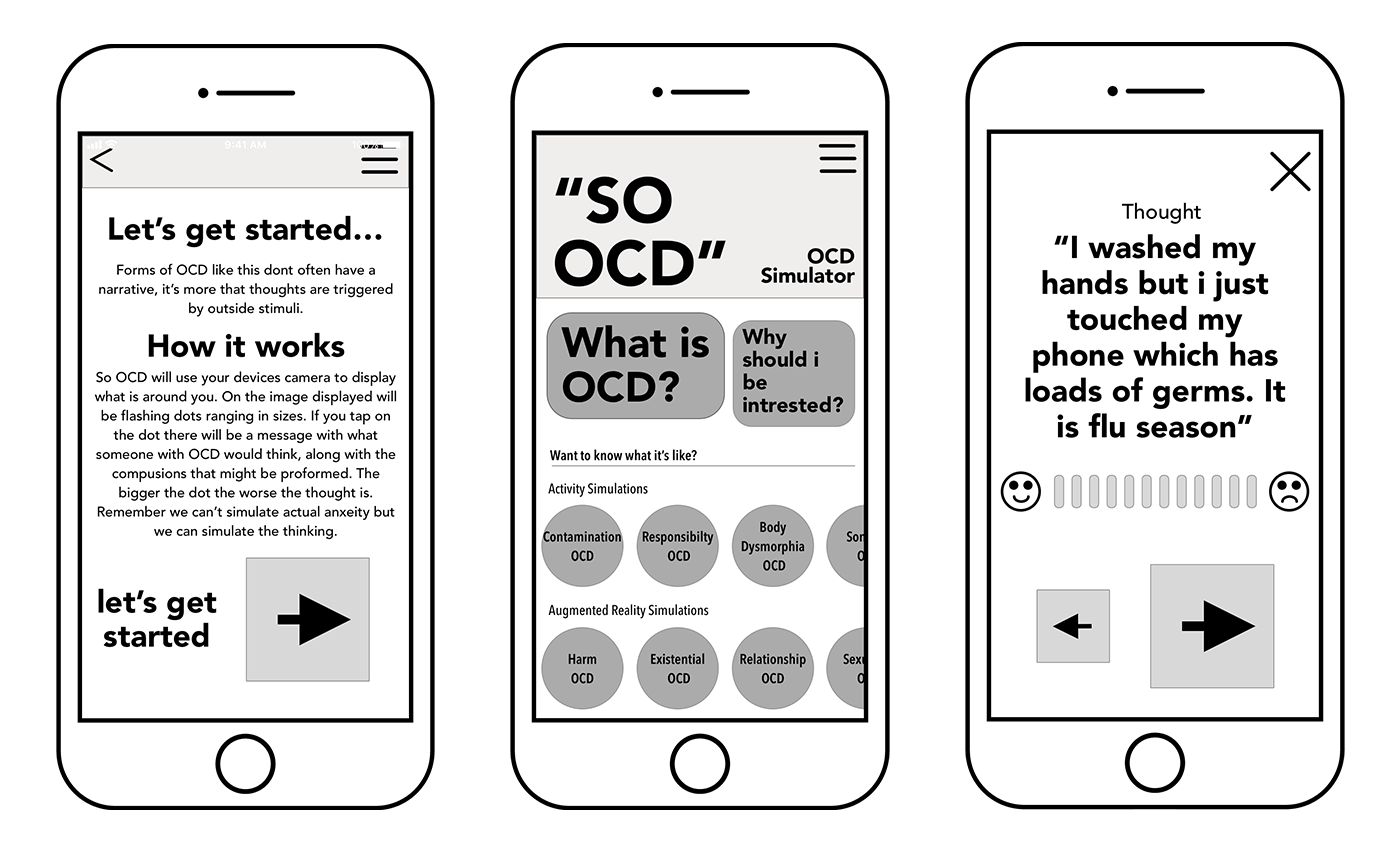
Outcomes
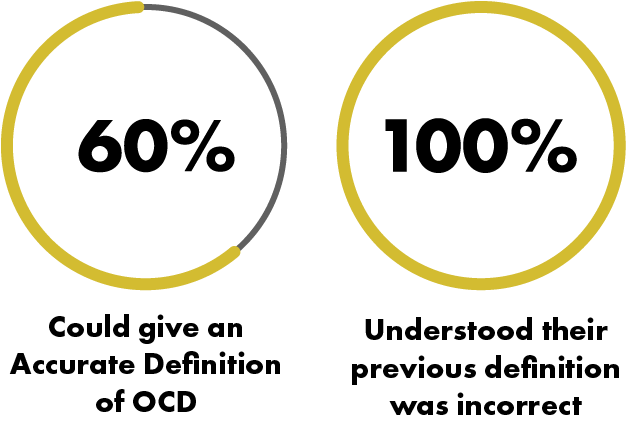
Success!
In product testing, I learned that the copy I had written needed to be more specific in some areas and more generalized in others. For example, I was not clear enough when I tried to prompt the user to physically carry out the activity as opposed to simply tapping through. Despite failures in some areas, users reported learning a great deal about OCD and there was an increase in empathy towards users as well as a willingness to stop mislabeling things as OCD! Moving forward, I would perform more product testing with the revised copy and create more simulations to see if this performance could be improved with time.
UX Lessons
Throughout this project I learned that our first attempt at a solution is often not the best solution, if we’re not careful we can get overly excited and become blind to other areas of the problem. However, our knee jerk reaction can be useful in other ways. The answer that we jump too is our intuition pointing us towards new areas of the system which may hold a better solution for our needs.
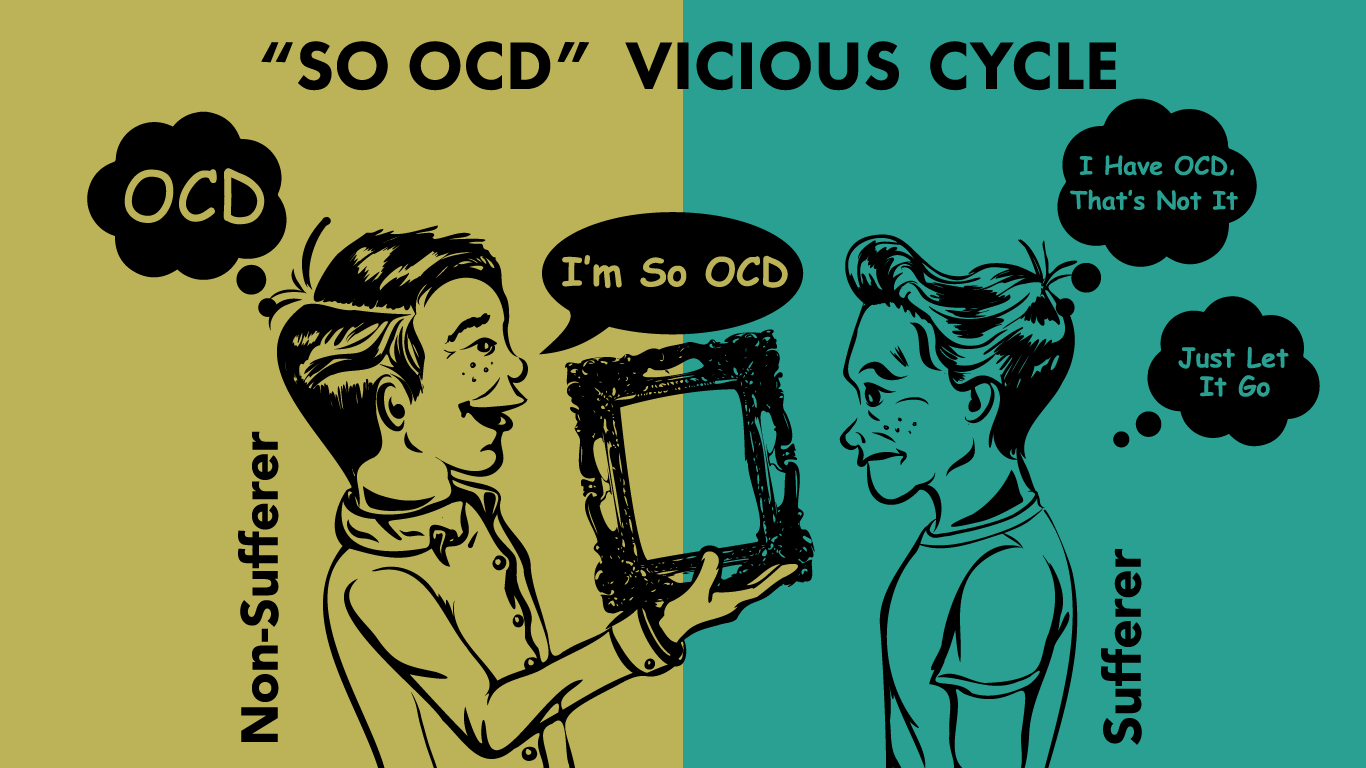
To Demonstrate what I am talking about, here is a visualization of the scenario I am trying to prevent with this project.
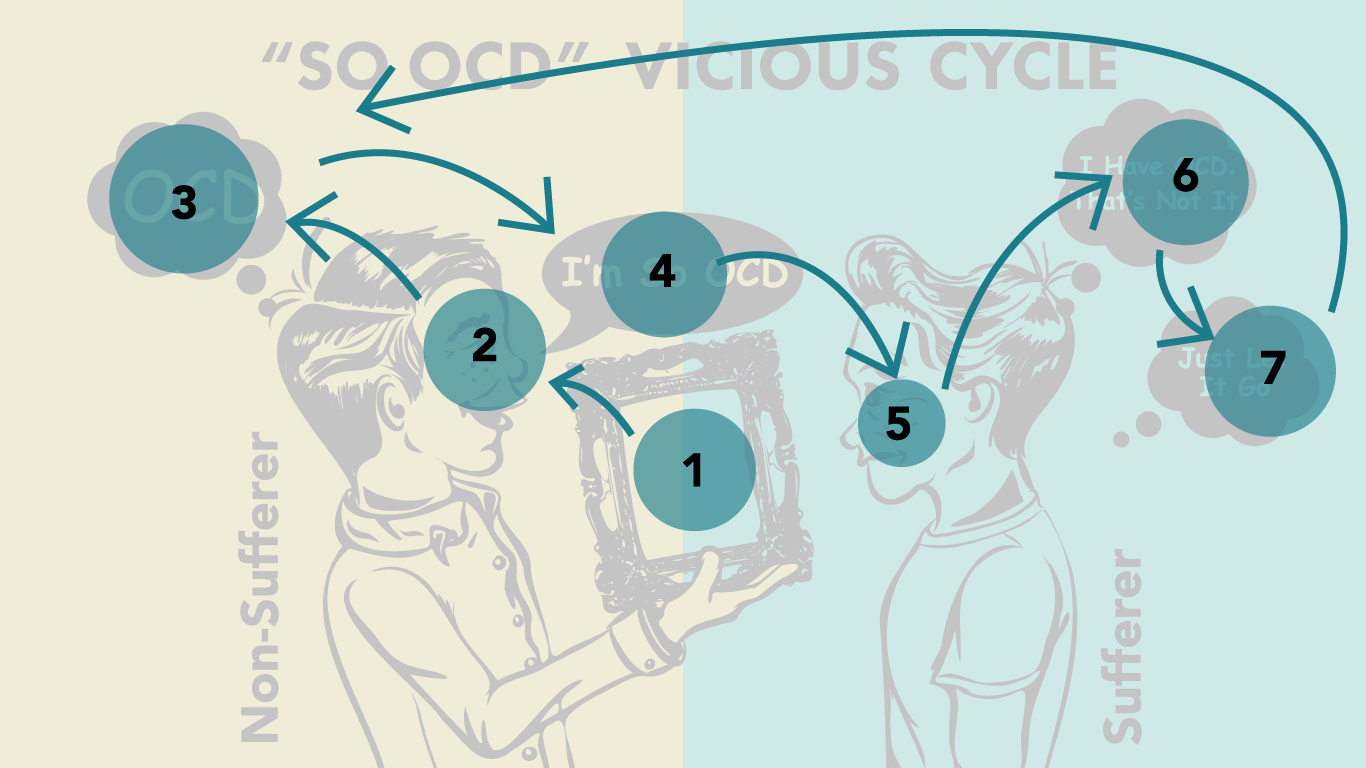
Overlaying a simplified version of the system will help illustrate what is occurring.
- Something could be perceived as “off” (such as an off center picture).
- A Non-suffer sees the object.
- That person decides that it bothers them.
- They falsely claim that the annoyance is OCD.
- A person who suffers from OCD hears it.
- The action belittles the sufferer’s struggle with the disorder.
- The suffer doesn’t correct them, which only reenforces the non-sufferers behavior.
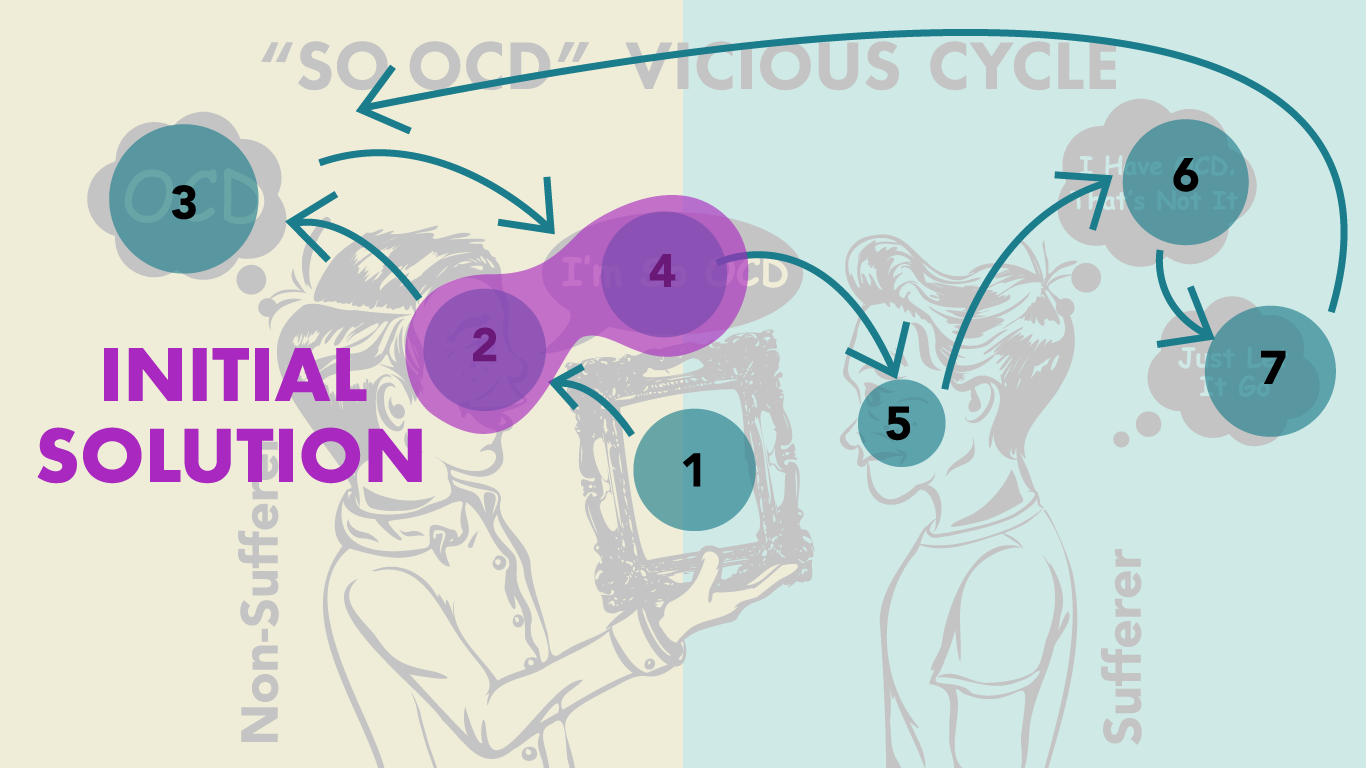
My Initial Solution was to have people notice and track their behavior which have has been shown to help people change unwanted behavior. This solution affects the areas in purple.
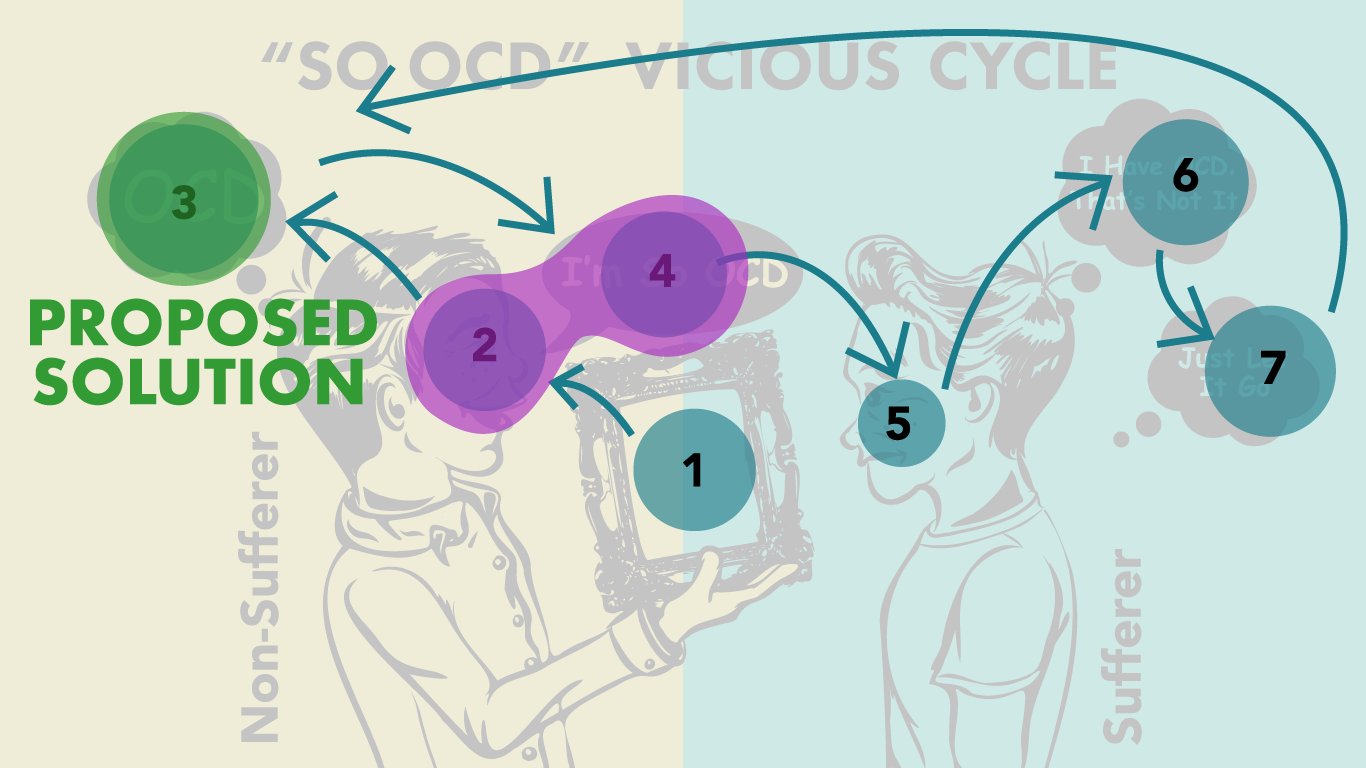
After identifying the elements of the system my gut solution was addressing, it became clear that there was a much more influential aspect that could provide a better solution. By simply asking what connects these things, I found the foundation for a better approach to the problem. The way people generally think about OCD is wrong.
